WEST COAST FERAL CAT RESCUE & PET FOOD BANK
Our Beloved Volunteers Present & Past

Leslie Daniel Yates

Karyn Rainer
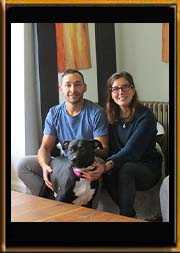
Johnny Mavrikos & Kai Yates Mavrikos
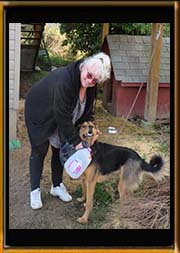
Sandee Whitney
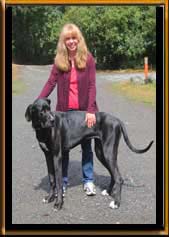
Lorie Adler

Jocelyn Roy

Natalia Saddington

Anthony Walters
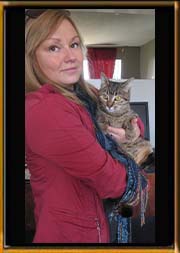
Krystal Hamelin

Paul
WishList Click on the Fairies
When somebody asks about how animal rescue groups are formed in British Columbia, BC, the majority of people have no idea about the legal difference between them. We hope this text can clarify any doubt readers may have regarding this subject.
People are used to imagine an animal rescue group only as a charity and not just a group of animal lovers who got together to help animals, like it used to be on the past. That was how Margarita rescued cats and dogs in Uruguay, the country where she was born.
When Margarita and the other board members began asking around how animal rescues work in BC the propaganda to become a not-for-profit and a charity seemed to be the only logic alternative. So, unexperienced, they happily followed the same path as all the other groups.
For two years they were a charity and for eight years they were a not-for-profit group. Nevertheless, during those eight years the heavy paperwork load, the struggle to find board directors in a small competitive town where are dozens of charities and; especially, the restriction to support or to oppose a politic party showed they were wrong.
First, the amount of office work was taken away the time they needed to do the fieldwork, to rescue and rehabilitate cats. Second,they could not accept to sell the voice they so deperate need to speak up for animal right, to lobby the govertment for change.
Therefore, in August, 2020, Margarita registered the group as a cat rehabilitator sole-propietor business. In relation to work it was no difference; in the contrary, the group of volunteers can now dedicate one hundred percent of their time to rescue and rehabilitate.Was this move financially beneficial to the group, no, in the contrary. It deprived them from any chance they had to get grants to cover for all the veterinary bills as all the other groups do.
Last, for those who wonder how the majority of cat rescue groups in Victoria find enough time to do everything? Number one, if the group is a large corporations their paid staff and volunteers share the workload. Number two, the group needs to cut corner somewhere. In general, this is the most frequently seen shortcuts: A. Only a few rescues are done locally and
b. domesticated kittens arrive by plane three or four times a year from other provinces or countries to place in the large pet shop multinational corporations that donate grants.
Conclusion, those are the differences caused by the different legal status.
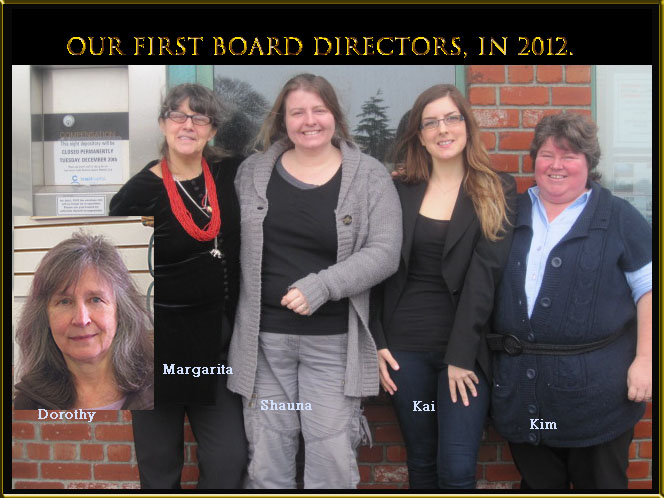
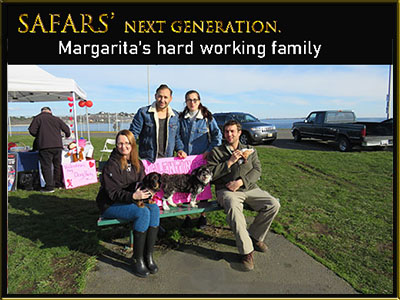
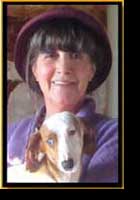
Margarita Dominguez
Over the years the example three women gave me modeled my life. From a very young age I admired Brigitte Bardot for her devotion to animals. I grew up dreaming to be like her.
At 20 years old I met my second idol, a beautiful sophisticated and lovely lady called, Dolly, who had an animal refuge in her magnificent mansion in front of the ocean. Although she saw me as the legacy for her animal rescue; unfortunately, I was still too young to spend the rest of my life in the farm she was planning to move to. After 2 years of completely devoting my life to rescuing, saving, healing, and taking care of the animals with her I moved back to the city.
I was hired as a public relations' representative in a very well known fish plant. However, what I did not know at the time was that outside the doors of the gigantic building where I worked another cruel reality was awaiting for me.
The freezing plant had 600 underpaid workers, constant ammoniac leaks, ambulances coming in and out every day, and dozens of mistreated cats getting electrocuted by evil minds. Luckily for these feral cats, and for my agonizing heart, among the many people working in that gigantic enterprise were also the animal lovers, the veterinaries. Thanks to them I could complete one of the best missions of my life, spay and neuter all the cats in the plant. During three years during weekends and late nights, these wonderful beings put animals first before money and prestige. Although the fact that these veterinarians had young families waiting for them at home and that the plants' salaries were not the highest, their passion and commitment to the profession they had chosen came before anything else. The example they gave me has remained engraved on my heart forever. It constantly kindles my enthusiasm during the hard and sometimes unfair battles to save animals from abuse and neglect.
Therefore, after many years I moved to Quebec City where my mission continued in a different setting. Although the country where I was born, Uruguay, is like Texas, a meat producer and exporter; ironically, it was in Quebec where I started my fight to protect farm animals and the horses used in tourism industry. This new experience taught me that when people have to survive with little income during freezing winters, farm animals and pets are in general extremely neglected.
The horse-drawn carriage industry in Quebec City and Montreal had a devastating effect on me. How can it be that the suffering of an animal is considered romantic to some? I asked myself for fifteen years each time I saw them pass in front of me. Every day I saw these poor animals coming from very far away stables to put another 12 hours of walking on cemented roads under 32 degrees celsius and 99 % humidity. Every day I saw them going up and down hills with their heads collapsing down from exhaustion as they carried on among the smoke and noise of tourist buses and cars. Nevertheless, the city inspectors could not do anything about it because from the street level, it was impossible to get a good photograph for proof. The police needed proof for these acts of maltreatment committed by drivers like that they could request an update on very old bylaws.
Therefore, because the only way to get a good shot from inside the carriage was from above, I rented an apartment on an upper level where the carriages passed every day. Finally, I got a great shot! The picture and story of drivers carrying more than 4 adult at a time got published and a group protecting the horses' rights has taken over for me. My mission was accomplished and I was free to come to Sooke. My heart still bleeds today with this memory.
It was in BC, in 1998, where I met my third idol, Treinjia Horn, the Nana Foundation's first lady. Thanks to her unconditional love and devotion to animals I have been able to help many animals in our community. She is a real angel; her heart knows no greed neither a need for control. She always puts animals first. Without her help I would not have accomplished as much as I did and I would not be where I am today in regards to helping animals. I would not have been able to help Brew, Deene, Missy, and many other families. Nowadays, I dream and aspire to one day be like some of these admirable ladies who achieved to make a positive change in the lives of animals.
CLICK ON THE IMAGES/BUTTONS TO READ ARTICLES
I apologize for two of them only being in French.


Sandee Whitney
I have been rescuing feral cats since I was 12 years old in the Priaries. All the cats that I have owned have been feral and strays. I love all kinds of animals and the ones under my care have lived long happy lives.When I grew up I always had cats and dogs that my mom had rescued; she was also an animal advocate.
Since I moved to the island I first starting rescuing cats in Nanoose Bay practicing the same program used by Safars, the Trap/Neuter/Release Program. After being In Victoria for many years now, I fell the need to join a group dedicated to saving animals. A year ago, I was introduced to the real cat trappers in Sooke, the ones who dedicate their lives to work in muddy fields to undo human cruelty.
At that point, I knew that Safars was my group and I started volunteering with them. After fullfilling the society's requirement of having to volunteer for a year before becoming a board member, I am now a proud volunteer board director.
Everything we do in the society such as: picking up and delivering pet food to dog ownerss in need, working with homeless dogs downtown Victoria, feeding far away cat colonies, tamming scared pets, and rescuing animals is an honor to me. I am able to change an animal's life and feel blessed for being a kind human being.
One of the cats my family has now was rescued from the old Sooke Disposal's landfield.